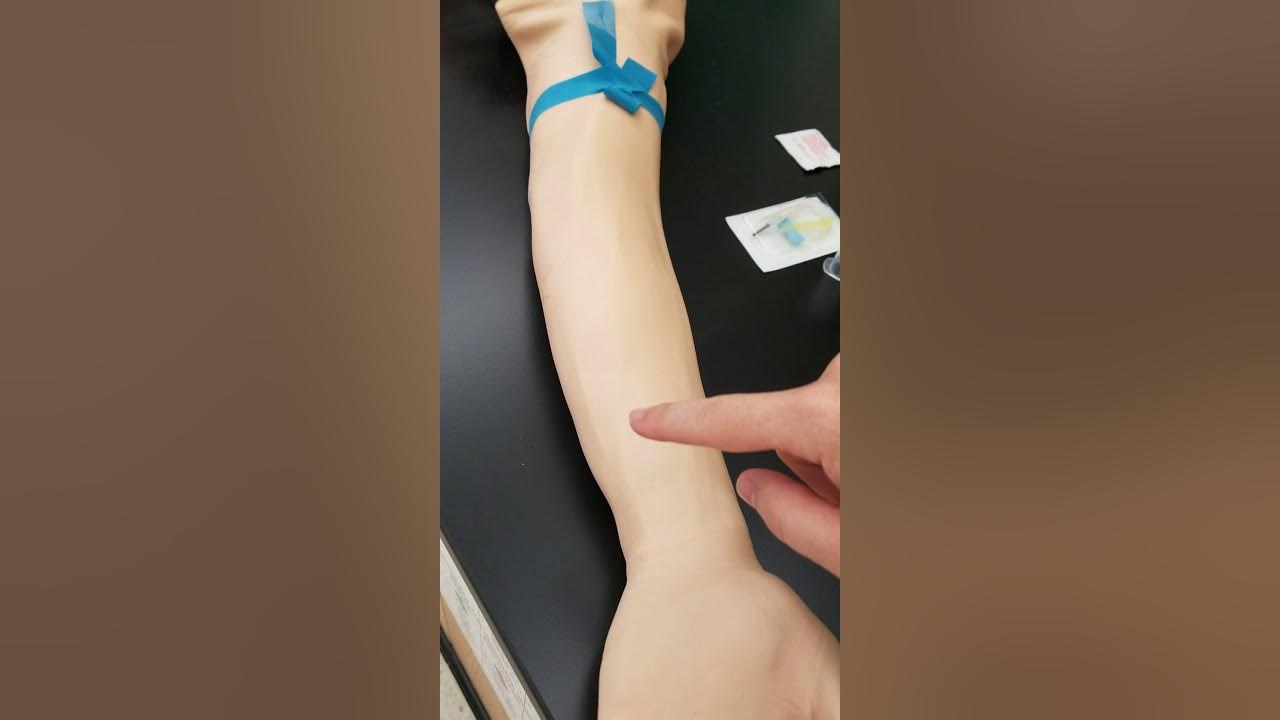Skill Practice #1: Tourniquet Procedure Details
Summary
TLDRThis instructional video breaks down the essential technique for properly tying a tourniquet before venipuncture. It emphasizes the importance of correct tourniquet placement (3-4 inches above the site) to avoid complications such as hematomas or hemo concentration. The video covers the significance of the tourniquet’s timing (no longer than one minute) and how it affects blood draw results. It also discusses the proper glove use, vein positioning, and the best methods for ensuring patient comfort and effective blood collection, making it a valuable resource for those learning venipuncture techniques.
Takeaways
- 😀 The tourniquet should be tied 3 to 4 inches above the venipuncture site to avoid complications like vein collapse or hematoma.
- 😀 Wearing gloves is essential to avoid cross-contamination and to protect both the healthcare worker and the patient.
- 😀 A tourniquet should not be left on for more than one minute to prevent hemo concentration, which can affect lab test results.
- 😀 Hemo concentration increases progressively after one minute, with its effects on blood test accuracy becoming significant the longer the tourniquet is left on.
- 😀 The median cubital, cephalic, and basilic veins are typically located in the antecubital fossa, which is the area where venipuncture is commonly performed.
- 😀 It is important to use proper technique when tying the tourniquet, with no specific standard, but a common method is to place the shorter piece of the tourniquet on the right side for right-handed individuals.
- 😀 When tying the tourniquet, the practitioner should grip it with their thumb and two fingers, applying tension in the right manner to avoid hurting the patient or causing inadequate blood flow.
- 😀 Releasing the tourniquet after the procedure should be done carefully, preferably pulling straight up or towards the practitioner rather than pulling back to avoid discomfort or injury to the patient.
- 😀 The correct amount of tension in the tourniquet is important to maintain steady veins while still allowing blood flow—over-tightening can hinder the procedure.
- 😀 The proper procedure involves ensuring comfort for the patient, preventing unnecessary pain or discomfort from the tourniquet, and ensuring accurate blood flow during venipuncture.
Q & A
Why is the correct placement of the tourniquet important in venipuncture?
-The correct placement of the tourniquet is crucial to ensure proper blood flow restriction without causing harm. It helps in making veins more prominent for easier blood draw while preventing issues like hematoma or vein collapse. The standard recommendation is to place the tourniquet 3 to 4 inches above the draw site.
What happens if the tourniquet is left on too long?
-Leaving the tourniquet on for longer than one minute can lead to hemo concentration, which can alter lab results. As time passes, the percentage of hemo concentration increases, potentially skewing test outcomes.
How does hemo concentration affect blood test results?
-Hemoconcentration can increase the concentration of cells and proteins in the blood, which can lead to inaccurate test results. The longer the tourniquet stays on, the more pronounced the hemo concentration becomes, potentially affecting the validity of lab tests.
What is the recommended maximum duration for leaving the tourniquet on?
-The tourniquet should not be left on for more than one minute to avoid the onset of hemo concentration and to ensure reliable test results.
Why is wearing gloves important during venipuncture?
-Wearing gloves is essential to protect both the healthcare worker and the patient from potential cross-contamination. It helps prevent the transfer of harmful pathogens and ensures safety, particularly when dealing with bloodborne diseases.
What is the role of the antecubital fossa in venipuncture?
-The antecubital fossa is the area where the major veins (median cubital, cephalic, and basilic veins) are located, making it the preferred site for venipuncture. It offers easy access to veins for blood draws.
What is the significance of the position of the tourniquet during venipuncture?
-The tourniquet should be placed 3 to 4 inches above the venipuncture site to ensure that the veins stay distended but not over-pressured, which can cause the vein to collapse or lead to a hematoma.
How should the tourniquet be tied for a right-handed person?
-For a right-handed person, the smaller piece of the tourniquet should be placed on the right side, and the longer piece on the left side. This allows for better control when tightening and releasing the tourniquet.
What is the recommended technique for applying and releasing the tourniquet?
-The correct technique involves using two fingers and a thumb to hold the tourniquet in place, creating tension with the right hand. Once the proper tension is achieved, the back end is tucked and the tourniquet is positioned to be easily released by pulling the longer piece.
What should be avoided when applying the tourniquet?
-It is important not to tie the tourniquet too tightly or too high on the arm, as it can lead to excessive pressure, discomfort, or ineffective blood flow. Additionally, avoid rolling the skin or pulling hair when tightening the tourniquet.
Outlines

هذا القسم متوفر فقط للمشتركين. يرجى الترقية للوصول إلى هذه الميزة.
قم بالترقية الآنMindmap

هذا القسم متوفر فقط للمشتركين. يرجى الترقية للوصول إلى هذه الميزة.
قم بالترقية الآنKeywords

هذا القسم متوفر فقط للمشتركين. يرجى الترقية للوصول إلى هذه الميزة.
قم بالترقية الآنHighlights

هذا القسم متوفر فقط للمشتركين. يرجى الترقية للوصول إلى هذه الميزة.
قم بالترقية الآنTranscripts

هذا القسم متوفر فقط للمشتركين. يرجى الترقية للوصول إلى هذه الميزة.
قم بالترقية الآنتصفح المزيد من مقاطع الفيديو ذات الصلة

Perform a Venipuncture Collect a Venous Blood Sample Using the Vacuum Tube Method

Phlebotomy: The Veins Used for Venipuncture

Phlebotomy Lesson With My MA Students | Straight Needle

How to Insert an IV Step by Step 💉 | Essential Nursing Skills

【バレーボール】初心者必見!正しいスパイクジャンプのやり方

How To Breathe Properly While Swimming Breaststroke!
5.0 / 5 (0 votes)
